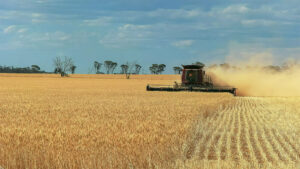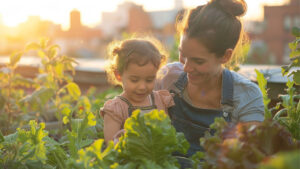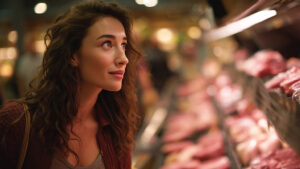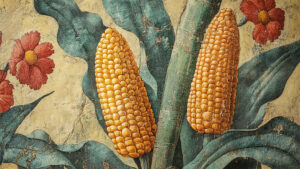Tom grows bananas on his farm in the Northern Rivers region of New South Wales. By his own admission, Tom’s bananas aren’t pretty. In fact, they might even be considered ugly. They’re unevenly sized, and many are too small. They are randomly bent, some distorted into the letter C. They are speckled with brown and black spots. Everything about Tom’s bananas would ensure that they’d be rejected by Coles and Woolworths. And rejected by many shoppers.
Tom doesn’t care. He has never attempted to sell his bananas to the major supermarkets. He sells some from his roadside stall. He gives a lot of them to local food banks and nursing homes. He gives some to neighbours. The rest he sells to small grocery stores.
Even though Tom’s bananas won’t win beauty contests, they are – according to everyone who buys them – the sweetest bananas ever.
Over 90% of Australians buy their fruit and veg from supermarkets. Shoppers only see the produce that meets the supermarkets’ cosmetic standards. It doesn’t matter that the perfectly shaped Cavendish bananas have no flavour, because tasteless perfect Cavendish bananas are all that most shoppers have ever tasted.
Supermarkets set zero food waste targets. However, their own food cosmetic standards result in up to 50% of farm produce being thrown away because it doesn’t measure up.[1]
The result of this is that Australia currently produces nearly 8 million tonnes of food waste every year.
There are other negatives to this unrealistic beauty standard.
- First, it pushes up the prices that consumers must pay to eat fresh fruit and vegetables. It costs a farmer as much to produce an imperfect apple as a perfect one. If half of the orchard’s fruit will be rejected by the supermarket, then the price of the accepted fruit needs to cover the time and cost of producing the rejected fruit.
- Second, it contributes to unhealthy diets. Families on budgets have a tough time choosing fresh food when processed food is so much cheaper.
- Thirdly, this impacts farm productivity. It’s hard enough being a farmer. It hurts when farmers don’t get paid for half of what they toil to grow and pay to pick.
The United Nations has determined that farm productivity needs to increase by 70% to feed the world in 2050. Most of this extra food needs to come from existing farms. One way to achieve this is by saving the food that currently goes to waste.
The fruit most impacted by supermarket beauty standards is citrus, with more than half of perfectly good fruit never leaving the farm.
A couple of years ago, Josh Ball set up Farmers Pick to rescue the food rejected by the supermarkets. So far, they have collected 1 ½ million tonnes of food. They then sell this imperfect fruit direct to consumers, at a heavily discounted price.
It’s great that initiatives like Farmers Pick exist. It wouldn’t be necessary if supermarkets hadn’t given consumers unrealistic expectations of what an orange or an apple or a banana should look like.
Supermarkets created the problem. They’re in the best position to fix it.
Why do we care?
One of the reasons we created IIF was to help farmers. We do this in a number of ways. We help them connect directly with their consumers, where they can educate them on the lifecycle of their produce, on seasonal weather variations and more.
We help farmers to improve productivity, cashflow and profit. We give them the chance to presell their produce – and then use that money to invest in planting or fertilising, harvesting or processing.
We help them build a brand for their produce, which they often then sell directly via their websites.
If we can play a small role in helping farmers to be paid for the produce that doesn’t meet the supermarkets’ beauty standards, we’ll be happy.
[1] Food waste, power, and corporate social responsibility in the Australian food supply chain https://eprints.qut.edu.au/222970/
Photo by Lucian Alexe via Unsplash




